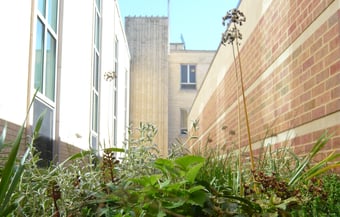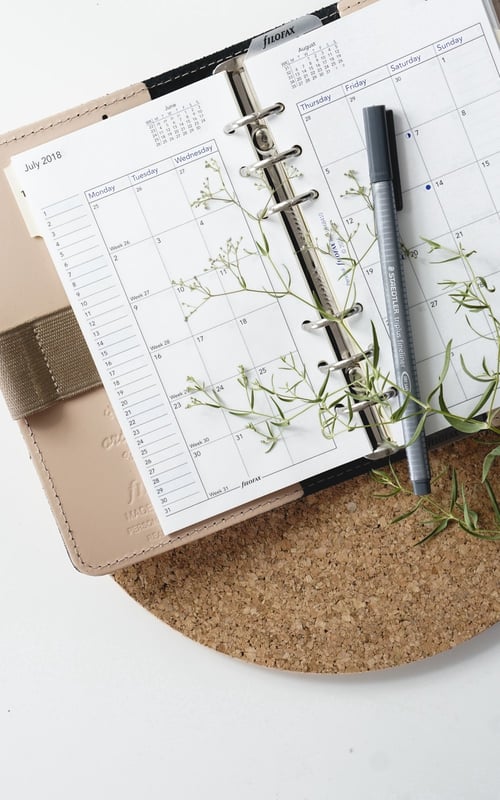
Taking care of your green roof, rain garden or other green system is critical. Unfortunately, many people worry it will cost too much and don’t do it. You can avoid that mistake.
Green roofs and other forms of green infrastructure have proven to possess more benefits to homeowners and commercial managers than bluing does to an old lady’s social life.
Sorry. We just really wanted to make a bluing reference. Is that still a thing? It’s gotta be a thing, right? Anyway, we’re done now. Back to the greening.
In addition to helping the environment in a multitude of ways, green roofs improve property values, soothe sore eyes and keep our cities cooler.
And they are themselves cool. Like, real neat indeed.
But only if they’re well-kept. Routine, cost-effective stewardship is the best way to maintain the worth of your initial green infrastructure investment and keep delivering those benefits, year after year. But how does it work? What steps should your plan include? And how can you avoid spending a branch and a limb in the process?
Luckily, bluing references aren’t all we’ve got. Read on for a step-by-step plan to steward your green roof cost-effectively today.
1. Understand What Stewardship IS
First things first: If you want to take the right approach, you need to understand what stewardship is.
We like to think of it as a proactive, not reactive, method of keeping a green system in tiptop shape. It means responding to the needs of that system on an ongoing basis rather than picking the phone up in a panic when the roof is nearly dead. It means nurturing as needed. Respecting the environment and its denizens – plant, animal and insect.
It also means understanding the difference between maintenance, which is a rather automated approach, versus stewardship, which is a partnership with the mini-ecosystem in which the roof is located.
If that’s all a bit confusing, relax. It also means getting professional help.
2. Write Out Your Goals

Before you pick up the phone and call the nearest green roofer, though, it pays to think through your goals for a minute. Ask yourself:
- What is your biggest goal for the roof or system?
- Is it merely to capture stormwater, or do you care about how it looks?
- Will humans (other than stewardship teams) use the roof?
- Do you have any mandates to meet?
Write this, and any other information you can think of, down so you can show it to your roofer when they arrive for a consultation.
3. Get an Initial Assessment (Or a Routine Assessment)
Whether you’ve let your green roof or other system slip for a year or seven, it’s critical you get an assessment before moving forward. Maybe the green roofing company with which you worked on the install offers routine assessments, in which case you should reach out to them.
On the other hand, maybe you haven’t spoken to that company in years or find you have different needs now. If you choose to work with a new green roofing company, then you’ll need an initial assessment. In order to make a cost-effective stewardship plan, they’ll need to familiarize themselves with:
- Your specific site and microclimate
- Any current issues it is experiencing
- Your goals, both short- and long-term
Only then can they make the best recommendations. OR you can reach out to our team, directly.
Sign up for a free assessment of your green roof. Our team will look at your roof and provide a detailed & actionable maintenance report. Discover more details about what's included in a free assessment with us and sign up below:
4. Choose a Schedule

Again, the ideal stewardship plan depends on multiple factors, but ideally you will get between three and six visits annually. If you’re absolutely cash-strapped, you can make do with one a year, but you need at least two to ensure you’re responding to the needs of the system in time.
Keep in mind, too, that waiting too long creates a much larger risk of catastrophe, which is likely to cost you much more in the end. From invasive species to resource depletion to waterproofing failure, issues that go too far can become nightmares. We’ve seen fixes that cost five or even ten times as much the cost of annual stewardship, which would have been caught with regular visits.No Bueno.
To start, we advise a three-visit-per-year schedule until your green roofer is more familiar with the environment and has the roof healthy and stable, at which time they can adjust it up or down as needed.
5. Work with Experts
Hands-down the best way to save money is to work with experts in the industry. A halfway-experienced green roofer not only won’t give you the best bang for your buck, they could very well cause damage. Never work with your friend’s unlicensed uncle or “give it a go” on your own. Retain only the best, and you’ll pay far less money down the road.
An even better way to save money is to have a green roofing expert on hand before you build the building. If your green roofer can speak with the rest of the design team, roofers and so forth, they can avoid many of the common issues associated with retrofitting.
If a roof is already built, that’s fine, of course. In that case, it’s just critical your green roofing team sees it as a living, breathing system in need of regular stewardship that won’t disrupt the biology flourishing there. That means organic pesticides and herbicides, if any. It means working with the natural system, where possible. And it means remaining proactive with each visit, rather than letting the roof slide and getting reactive later.
6. Get Started Now
There’s no time like the present to implement a cost-effective stewardship plan. The sooner you do, the sooner you can reap all those great benefits from the initial installation, ensuring that your investment doesn’t go to waste.
Whatever your goal, Ecogardens is happy to help resurrect a failing system, invigorate a neglected one or install something new.
Sign up for a free assessment of your green roof. Our team will look at your roof and provide a detailed & actionable maintenance report. Discover more details about what's included in a free assessment with us and sign up below:

